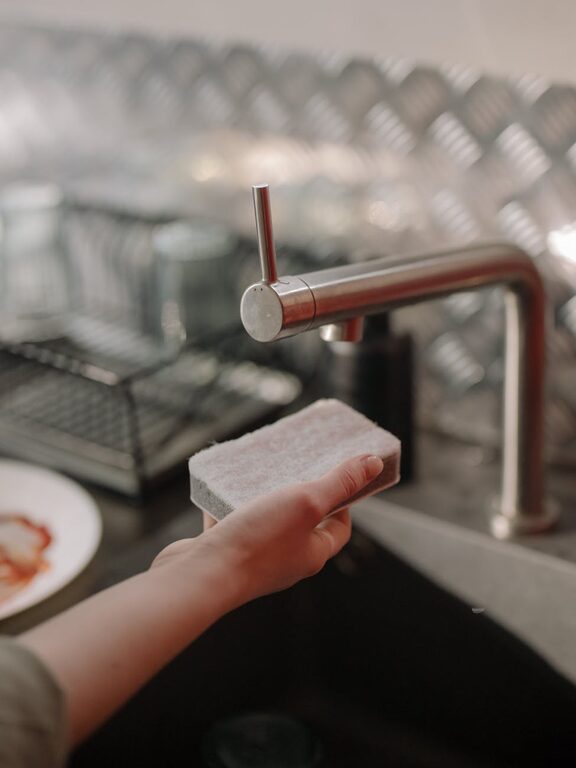Keeping your kitchen clean after dinner can sometimes feel like a daunting task. However, with a few practical strategies, you can make the cleanup process quicker, easier, and even a little enjoyable. Whether you’re cooking for one or feeding a family, these ideas will help you reduce stress and spend less time scrubbing and more time relaxing.
1. Plan Ahead with Minimal Cleanup in Mind
Choose One-Pot or One-Pan Meals
One of the best ways to cut down on dishes is by preparing meals that use fewer pots and pans. Recipes like casseroles, stir-fries, or sheet pan dinners mean fewer utensils and cookware to wash afterward.
Use Prep Bowls and Containers
Wash a few small bowls before cooking to use for chopped ingredients rather than using multiple plates or surfaces. This keeps your workspace tidy and makes washing quicker.
2. Set Up a Cleanup System Before You Start
Clear and Organize Your Sink
Before cooking, empty the sink of dirty dishes and set up the area with dish soap, a sponge, and a drying rack. Having everything in place prepares you to jump straight into cleaning as soon as dinner is over.
Use Hot Water and Soak as You Go
Fill one side of the sink with hot soapy water to soak pots and pans immediately after use. Soaking softens stuck-on food, reducing scrubbing time later.
Trash and Compost Within Reach
Keep a small trash bin or compost container nearby to toss scraps while cooking. It reduces clutter and makes final waste disposal faster.
3. Clean as You Cook
Wash Cutting Boards and Knives Immediately
Instead of piling cooking tools aside, rinse and wash items right after using them. This practice prevents a large pile from building up and speeds up post-dinner cleaning.
Wipe Down Surfaces Regularly
Use paper towels or a damp cloth to wipe spills and crumbs while the meal is cooking. This prevents messes from setting and cuts down on the work after eating.
Use Disposable or Recyclable Liners When Possible
Consider placing foil or parchment paper on baking sheets or trays before cooking. After dinner, simply discard the liner, saving time on scrubbing.
4. Simplify Serving and Eating
Serve Family-Style
Instead of plating individual portions in the kitchen, place food in large serving dishes at the table. This reduces the number of dishes and serving utensils used.
Use Dishwasher-Safe Items
Invest in dinnerware and cookware that can go directly into the dishwasher. This allows you to load and start the dishwasher immediately after the meal.
5. Post-Dinner Cleanup Tips
Clear the Table Together
If you share your home with family or roommates, make clearing the table a group activity. It goes faster and encourages shared responsibility.
Load the Dishwasher as You Go
Put dishes directly into the dishwasher rather than stacking them in the sink or on the counter. Running a full cycle means fewer hand washes.
Hand Wash What’s Needed Right Away
For fragile or non-dishwasher-safe items, wash them immediately to avoid dried-on food, which is harder to clean.
Wipe Down Counters and Table
Once dishes are cleared, take a minute to clean all surfaces with an appropriate cleaner. This prevents sticky residue and pests.
6. Use Tools and Products Designed for Easy Cleanup
Invest in a Good Sponge or Scrubber
Having reliable tools that work well makes scrubbing less frustrating and more efficient.
Use Non-Stick Cookware
Non-stick pans prevent food from sticking and reduce the need for intense scrubbing.
Keep Cleaning Supplies Handy
Store dish soap, sponges, and towels in convenient locations, such as under the sink or near the dishwasher.
7. Make It a Routine
Creating a habit of cleaning up right after dinner, rather than letting dishes pile up, makes the task feel less overwhelming. Over time, this routine becomes second nature and contributes to a cleaner kitchen overall.
—
By incorporating these ideas into your dinner routine, you’ll find cleanup is less of a chore and more of a manageable, even satisfying, part of your day. Enjoy your meals knowing your kitchen will be neat and ready for what’s next!

